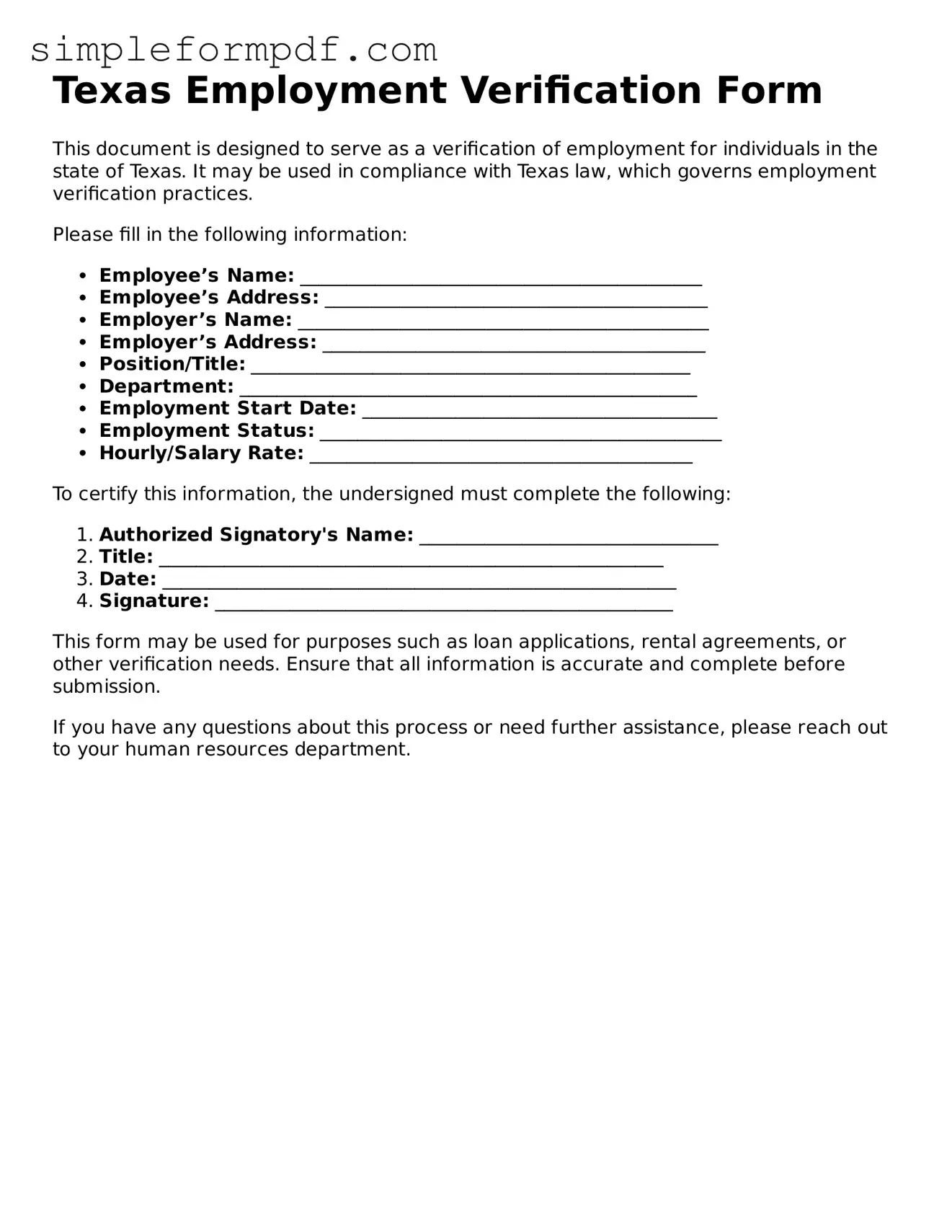Texas Employment Verification Form
This document is designed to serve as a verification of employment for individuals in the state of Texas. It may be used in compliance with Texas law, which governs employment verification practices.
Please fill in the following information:
- Employee’s Name: ___________________________________________
- Employee’s Address: _________________________________________
- Employer’s Name: ____________________________________________
- Employer’s Address: _________________________________________
- Position/Title: _______________________________________________
- Department: _________________________________________________
- Employment Start Date: ______________________________________
- Employment Status: ___________________________________________
- Hourly/Salary Rate: _________________________________________
To certify this information, the undersigned must complete the following:
- Authorized Signatory's Name: ________________________________
- Title: ______________________________________________________
- Date: _______________________________________________________
- Signature: _________________________________________________
This form may be used for purposes such as loan applications, rental agreements, or other verification needs. Ensure that all information is accurate and complete before submission.
If you have any questions about this process or need further assistance, please reach out to your human resources department.
